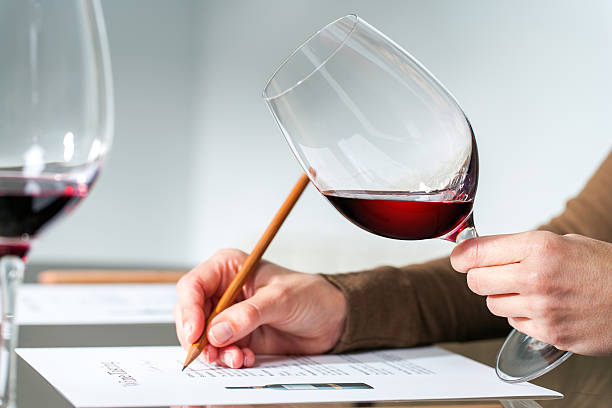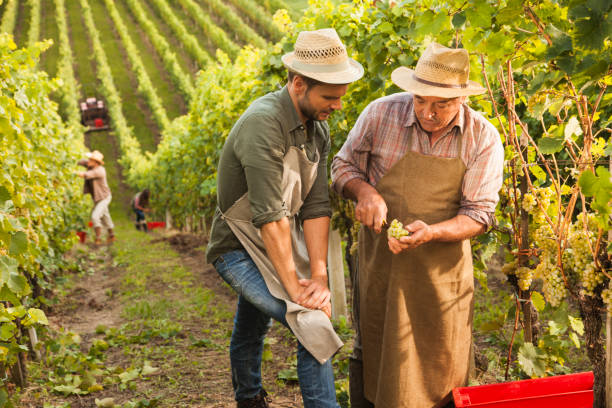In the intricate world of winemaking, one of the most critical factors influencing a wine’s flavor profile and overall quality is its acidity. Acidity is a fundamental component that shapes the taste, structure, and aging potential of wine. Winemakers carefully manage acidity throughout the production process to achieve the desired balance and character in their wines. Understanding the role of acidity and mastering its manipulation is essential for crafting exceptional wines.
The Importance of Acidity in Wine:
Acidity in wine refers to the presence of natural acids, primarily tartaric, malic, and citric acids, which are derived from grapes during the fermentation process. These acids contribute to the wine’s brightness, freshness, and complexity. Acidity provides a refreshing sensation on the palate, enhances fruit flavors, and helps to balance the wine’s sweetness and alcohol levels.
Acidity is also crucial for the wine’s stability and longevity. Wines with sufficient acidity tend to age gracefully, developing complex aromas and flavors over time. Conversely, wines lacking acidity may appear dull and flabby, lacking vibrancy and structure.
Measuring Acidity:
Winemakers use various methods to measure acidity levels in wine, with the most common being pH and titratable acidity (TA). pH measures the concentration of hydrogen ions in the wine, indicating its overall acidity level on a scale from 0 to 14, with lower pH values representing higher acidity. Titratable acidity measures the total amount of acids present in the wine, expressed in grams per liter (g/L) of tartaric acid equivalent.
Achieving Balance:
Balancing acidity in wine involves finding the optimal harmony between sweetness, bitterness, and acidity. This equilibrium varies depending on the wine style and grape variety. For example, crisp white wines like Sauvignon Blanc and Riesling typically exhibit higher acidity levels to complement their vibrant fruit flavors. In contrast, full-bodied red wines like Cabernet Sauvignon and Merlot require more moderate acidity to support their robust tannins and flavors.
Winemakers can influence acidity levels through various techniques during both grape growing and winemaking stages. In the vineyard, factors such as grape variety, climate, soil composition, and vineyard management practices all impact acidity levels. For instance, grapes harvested early in the growing season tend to have higher acidity levels, while grapes left to ripen fully may exhibit lower acidity and higher sugar levels.
In the winery, winemakers have several tools at their disposal to adjust acidity levels, including blending, acidulation, and malolactic fermentation. Blending different grape varieties or wine lots allows winemakers to fine-tune acidity levels and create more complex wines. Acidulation involves adding tartaric acid or other acids to the wine to increase acidity, commonly practiced in warmer regions where grapes may lack sufficient natural acidity. Malolactic fermentation, on the other hand, converts harsh malic acid into softer lactic acid, reducing overall acidity and imparting a creamy texture to the wine.
Managing Acidity in Winemaking:
During the winemaking process, winemakers carefully monitor acidity levels to ensure they align with the desired style and quality of the wine. Here are some key considerations for managing acidity:
- Grape Selection: Choosing the right grape varieties with the desired acidity levels is crucial for achieving balanced wines. Cool-climate regions tend to produce grapes with higher acidity levels, making them ideal for wines that require crispness and freshness.
- Harvest Timing: Harvesting grapes at the optimal ripeness stage is essential for balancing acidity and sugar levels. Early harvests yield grapes with higher acidity and lower sugar levels, while late harvests result in riper grapes with lower acidity and higher sugar levels.
- Cold Soaking: Pre-fermentation cold soaking can help preserve acidity by slowing down enzymatic reactions that degrade acids in the grapes. Cold soaking also enhances color extraction and flavor development in red wines.
- Fermentation Temperature: Controlling fermentation temperature is critical for preserving acidity and avoiding the formation of off-flavors. Cooler fermentation temperatures help retain volatile acidity and fruity aromas, while warmer temperatures may lead to acid degradation and loss of freshness.
- Acid Adjustment: If necessary, winemakers can adjust acidity levels by adding tartaric, malic, or citric acid to the wine. Careful titration and blending trials are essential to ensure precise acid adjustments without overpowering the wine’s natural flavors.
Mastering the balance of acidity is a fundamental skill for winemakers seeking to produce wines of exceptional quality and character. Acidity plays a pivotal role in shaping a wine’s flavor profile, structure, and aging potential. By understanding the factors influencing acidity and employing appropriate techniques during grape growing and winemaking, winemakers can craft wines that showcase the perfect harmony of acidity, sweetness, and flavor. Ultimately, achieving the right balance of acidity is essential for creating wines that delight the senses and stand the test of time.




